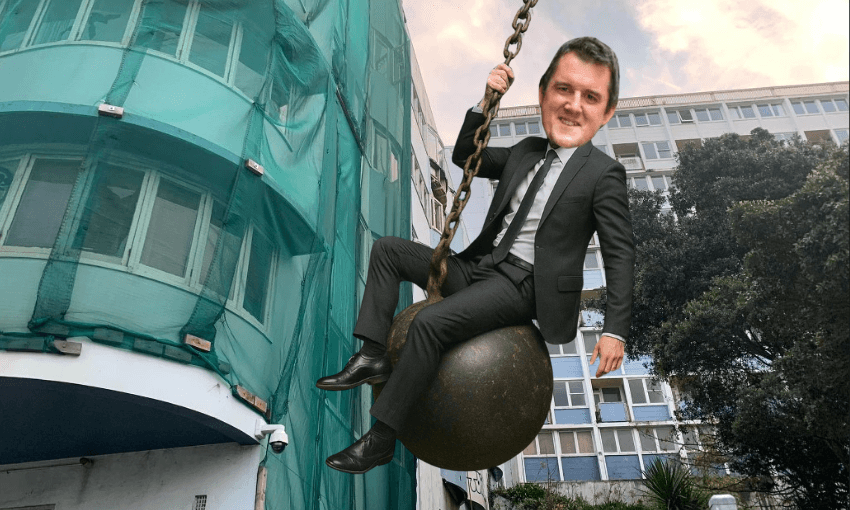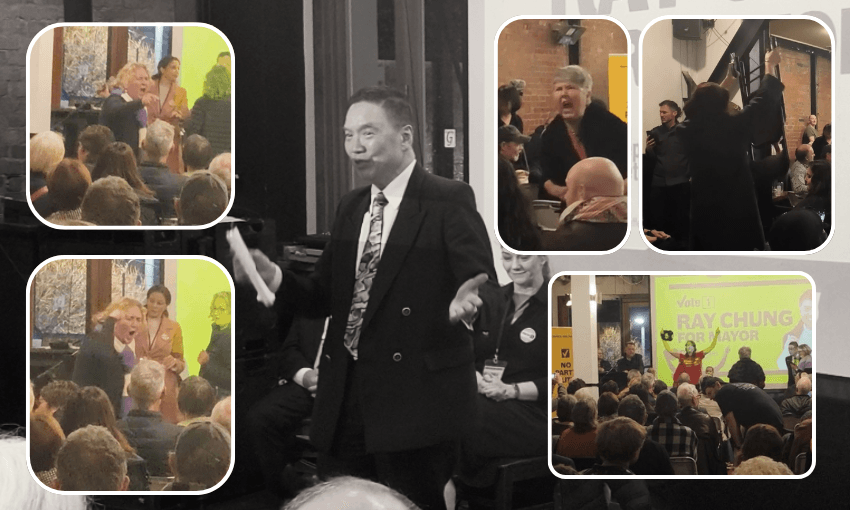The UN secretary general has described the American strikes on Iran as ‘a dangerous escalation in a region already on the edge’, while US allies have shown cautious support for the attacks. So what’s being said in Aotearoa?
Fighting between Israel and Iran ramped up overnight, after the United States’ recent entry into the conflict that began earlier in the month when Israel bombed several sites in Iran, including nuclear and military facilities, and Iran retaliated.
While New Zealand has echoed concerns from 19 of the countries on the board of International Atomic Energy Agency about Iran’s nuclear capability, the government here has been cautious to not expressly support or oppose the American strikes, arguing in favour of diplomacy. “Ongoing military action in the Middle East is extremely worrying and it is critical further escalation is avoided,” said foreign minister Winston Peters on Sunday. Here’s a rundown of the response since from the government, opposition parties, advocacy groups and experts.
What’s happening for New Zealanders in the region?
New Zealanders anywhere in the Middle East region have been urged to register on the government’s Safe Travel website, and if they have a clear way to leave, to take it. Yesterday afternoon, acting prime minister David Seymour said 119 New Zealanders had been identified in Iran, and 117 in Israel.
The government has sent personnel and a Hercules aircraft to the area to assist with evacuations, and has communicated with commercial companies about using seats on their planes. However, those flights will not be possible while the airspace isn’t clear; essentially, the area isn’t currently safe to fly through.
In the past, repatriation flights have come at a cost to individuals who get seats on these planes. During the Covid-19 pandemic and the initial period following the war in Palestine, which started on October 7, 2023, repatriation flights cost up to $5,500 per person, much more than a commercial flight.
Because of the inability to safely fly at present, New Zealand embassy staff in Tehran, Iran’s capital, have been evacuated with a convoy of people from other governments. Two embassy families have travelled by land to Azerbaijan, which is north of Iran. “The New Zealand government has a duty of care to its staff posted overseas, so we did the responsible thing to get them out of harm’s way,” said Peters. “If and when opportunities arise to assist the departure of other New Zealanders in Iran and Israel, we will pursue them with urgency.”
What is the official government stance on the conflict?
In an initial response to the US attacks on Sunday, Peters said in a statement that the ongoing military action in the Middle East was “extremely worrying”, and urged “all parties to return to talks. Diplomacy will deliver a more enduring resolution than military action.”
In an updated statement yesterday afternoon, Peters said, “New Zealand has consistently opposed Iran’s nuclear programme, along with many other countries. Iran cannot be allowed to develop nuclear weapons. In that context, we note the United States’ decision to undertake targeted attacks aimed at degrading Iran’s nuclear capabilities. We also acknowledge the US statement to the UN Security Council that it was acting in collective self-defence consistent with the UN Charter.”
Standing in for Christopher Luxon, who is in Europe, at yesterday’s post-cabinet press conference, deputy prime minister David Seymour did not accept that Peters’ statement was an endorsement of the US’s actions, but denied New Zealand was “sitting on the fence”. “Nobody is calling on New Zealand to rush to judgment on the rights and wrongs of the situation,” he said. “We’re far better to keep our counsel because it costs nothing to get more information but going off half-cocked can be very costly for a small nation.”
Luxon is currently attending meetings in Europe, including a Nato meeting – New Zealand is a Nato partner. “What we don’t need is more military action, we need a political solution to all of these issues in the Middle East,” Luxon told Radio New Zealand yesterday. “New Zealand doesn’t want to see a nuclear-armed Iran destabilising its neighbours,” he had said the day prior. “We don’t want to see Gaza under Israeli occupation. We don’t want to see Hamas holding onto hostages. But the answer in all of those cases, and all of the conflicts within the Middle East is actually dialogue and diplomacy, not military action.”
What about the opposition parties?
Labour’s defence spokesperson, Peeni Henare, said the party “does not support the ongoing attacks, including the United States’ bombing of Iran, which is in breach of international law, and the government should be saying this”. Labour leader Chris Hipkins criticised an earlier comment from Luxon that the strikes on Iran created an “opportunity” for dialogue. “I think some of the comments from the prime minister suggesting that you should bomb a country in order to get into negotiations with it are just simply wrong,” Hipkins told The Post.
The Greens called on the government to condemn America’s actions, with co-leader Marama Davidson saying the attacks were “a blatant breach of international law and yet another unjustified assault on the Middle East from the US”. Te Pāti Māori co-leader Rawiri Waititi said the party stood firmly against “the rising tide of military aggression”, and alleged “Luxon’s complicity is putting everyone in Aotearoa at risk”.
What have Iranians in New Zealand said? And what about advocacy groups?
“The fear is this war will escalate and more lives will be lost. We hope there will be negotiations for the end of this war soon, but with what America did [on Sunday] we are very stressed and scared about what will happen next,” Elham Salari, an Iranian in New Zealand with family in Tehran, told RNZ.
The Palestine Solidarity Network Aotearoa called for the government to condemn the US attacks, while peace group Just Defence, which is planning a protest in Wellington today, said “we urge our government to distance itself from these violent, irresponsible states [the US and Israel]”.
A spokesperson for the New Zealand Jewish Council urged people not to “conflate the actions of the Israeli government with the Jewish community”. In an RNZ interview yesterday, Ben Kepes said this happened all the time and was “not only absurd, it’s a dangerous conflation”. “It’s concerning that Jews globally are held responsible for the actions of the Israeli government… I have no control over Israel. No sane person wants war, everyone wants de-escalation.”
Marilyn Garson, a spokesperson for Alternative Jewish Voices, meanwhile, told The Spinoff that the attack was “an absolute disaster, likely to spread [through the region] and a terrible distraction from the starvation and bombardment in Gaza ”. While the concerns were about Iran being close to developing a nuclear weapon, Garson said that Israel’s undeclared nuclear weapon programme was just as pressing an issue. “The New Zealand government should at least speak about what is right and wrong, legal and illegal,” she said.
Do New Zealand international relations and law experts have a perspective?
Academics in New Zealand have pointed out that the strikes are illegal under international law. “There’s nowhere in the UN charter that says you can bomb someone who won’t negotiate with you. But whether you get to a point where that is actually condemned is going to be very different,” Alexander Gillespie, a Waikato University law professor, told RNZ. “There’s the theory of international law, with the UN Charter, and then there’s the reality of international politics at the moment, which means that America will not be condemned internationally by the Security Council or even through the International Court of Justice.”
Similarly, Anna Hood, an associate professor in law from the University of Auckland, told RNZ, “Under the UN Charter, it is only possible to use self-defence if you have been attacked, or you are at imminent risk of being attacked. So that means there are missiles firing at you or you know that very, very shortly that will happen.”
Te Kuaka, an independent group advocating for New Zealand to have a progressive foreign policy, condemned the US attacks on Iran. “This attack constitutes a clear violation of international law and the sovereignty of states,” it said. “It risks catastrophic regional escalation.”








